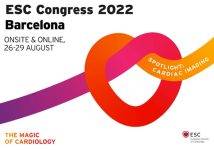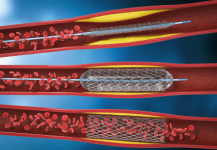Stent thrombosis (ST) is a serious complication of coronary PCI. However, its incidence across registries is low. It has been classified according to onset into acute (less than 24 hrs.), subacute (between 24 and 30 days), late (between 30 and 365 days) and very late (later than 365 days). The estimated incidence of ST is…
TCT 2022 | Angioplasty vs. Surgery: The BEST Study Long-Term Results
The BEST study was a prospective, randomized study to compare percutaneous coronary intervention (PCI) with everolimus-eluting stents vs. myocardial revascularization surgery (MRS) in patients with multivessel disease. The analysis was interrupted early due to slow patient inclusion. The study included 880 patients, who were randomized 438 to the PCI arm and 442 to the MRS arm.…
Heparin Pretreatment in STEACS Treatment: A New Old Ally?
The treatment of ST-segment elevation acute coronary syndromes (STEACS) is undoubtedly reperfusion therapy with primary percutaneous coronary intervention. Similarly, nobody doubts that the pretreatment with more stronger antiplatelet agents has a role in such a treatment. In certain sites, unfractionated heparin (UFH) pretreatment is also administered before the patient enters the cath lab; its aim…
Is TCA Useful for Severe Impairment of Left Ventricular Ejection Fraction?
Heart disease is the most frequent cause of heart failure and, in some observational studies, transluminal coronary angioplasty (TCA) could help improve ventricular function. The only major randomized study to compare myocardial revascularization surgery (MRS) vs. medical treatment in patients with ventricular function impairment was the STICH study, which showed no difference at 5 years,…
ESC 2022 | Should We Follow-Up with Functional Testing in High-Risk Patients after CTA?
While the need for repeat cinecoronary angiography after transluminal coronary angioplasty (TCA) has decreased with the use of drug-eluting stents and improved medical treatment, patients still present ischemic recurrence or cardiovascular events at follow-up. Using a functional test at follow-up after TCA or myocardial revascularization (CMR) is a frequent practice in our context. This is…
The Best of the SOLACI-SOCIME 2022 Main Arena: New Paradigms in Angioplasty
“New Paradigms in Angioplasty,” by Dr. Gregg Stone While most studies on angioplasty in stable coronary artery disease have shown an improvement in angina frequency and exercise capacity, there is no significant reduction in death and acute myocardial infarction (AMI). Currently, one of the main factors is the definition of vulnerable plaque, because it is…
Changes in Coronary Collateral Function Post CTO Intervention
In the last few years, we have seen significant growth of chronic total occlusion (CTO) percutaneous intervention, which has also been considered for patients with viable territory that remain symptomatic. Experienced centers present successful CTO intervention rates close to 90%, especially with a hybrid approach. However, it is still a complex procedure, and target vessel…
Angioplasty in Nonagenarians Is Increasingly Frequent: How Does It Evolve?
Currently, the number of nonagenarian patients undergoing angioplasty (whether elective, urgent or emergency) has increased. This population is linked to more comorbidities and has barely been included in most randomized studies or registries. As such, we do not have robust evidence on this group. Researchers conducted an analysis of the J-PCI OUTCOME Registry, in which…
Three-Year Outcomes after CTA with 2-Stent Technique Vs. Provisional Stenting for Complex Bifurcation Lesions
The prevalence of coronary lesions with bifurcation involvement is about 20% in patients undergoing coronary angiography (CTA). While provisional stenting is overall the most accepted technique, the 2018 myocardial revascularization guidelines recommend the 2-stent technique for complex bifurcation lesions, defined as side branch with lesion >5mm, distal reference diameter of the side branch ≥2.75, or…
EuroPCR 2022 | The IMPROVED-CTO Trial
PCI success rate in chronic total occlusion (CTO), according to some registries, is below 80%. These failed revascularization procedures might lead to quality-of-life deterioration and shorter survival. This concern has driven the development of new techniques and technologies in an attempt to increase PCI success. Today, approximately 20% of CTOs are treated with a second…









